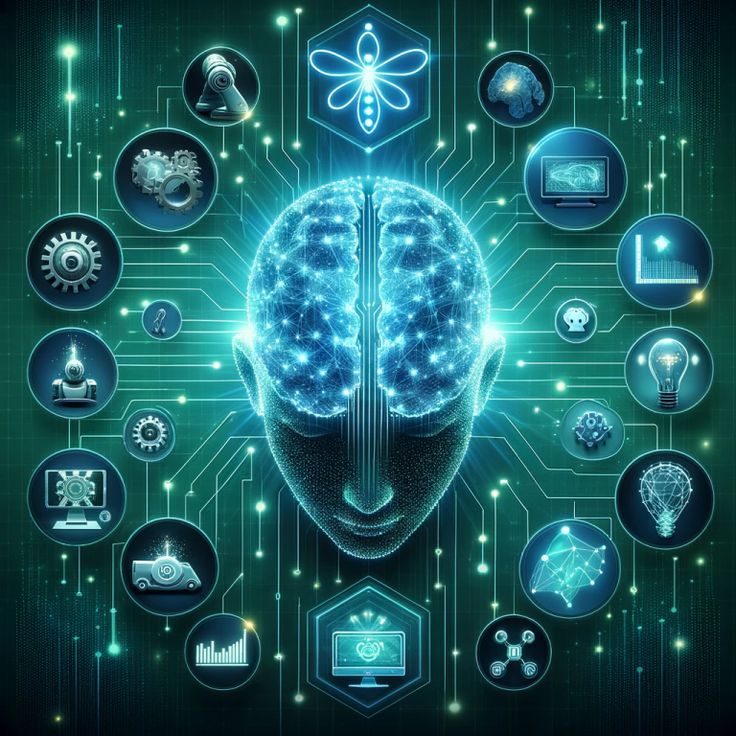1. Introduction
Natural Language Processing (NLP) is a vital area in artificial intelligence that focuses on the interaction between computers and humans through natural language. As the complexity of language and the need for understanding contextual nuances grow, the choice of model architecture becomes critical in developing efficient NLP systems. Among the various architectures used in NLP, Recurrent Neural Networks (RNNs) and Transformers have gained significant attention for their distinct approaches to processing language data. This article aims to compare RNNs and Transformers, highlighting their strengths, weaknesses, and applications in NLP.
2. Understanding RNNs
2.1. Definition and Structure
Recurrent Neural Networks (RNNs) are a class of neural networks designed to recognize patterns in sequences of data, such as time series or natural language. RNNs have a unique architecture that allows them to maintain a memory of previous inputs through hidden states, enabling them to process sequences of varying lengths.
2.2. Advantages of RNNs
- Sequential Data Handling: RNNs excel at processing sequential data by maintaining information across time steps. This makes them particularly useful for tasks like language modeling and speech recognition.
- Memory of Past Information: RNNs can remember past inputs due to their recurrent connections, allowing them to capture temporal dependencies effectively.
2.3. Limitations of RNNs
- Vanishing Gradient Problem: During training, RNNs often struggle with long sequences due to the vanishing gradient problem, where gradients become too small to influence learning effectively.
- Difficulty in Capturing Long-range Dependencies: While RNNs can remember past information, they find it challenging to capture long-range dependencies, making it difficult to relate distant words or phrases in a sentence.
- Slow Training Times: RNNs are generally slower to train than other architectures because they process data sequentially, which limits parallelization.

3. Understanding Transformers
3.1. Definition and Structure
Transformers are a revolutionary architecture introduced in the paper “Attention is All You Need.” Unlike RNNs, Transformers rely on a mechanism called self-attention, which allows them to weigh the importance of different words in a sequence regardless of their position. This architecture consists of an encoder-decoder structure, with each layer featuring self-attention and feed-forward neural networks.
3.2. Advantages of Transformers
- Parallelization of Training: Transformers can process input data in parallel, significantly speeding up training times compared to RNNs.
- Better Handling of Long-range Dependencies: The self-attention mechanism enables Transformers to effectively capture relationships between distant words, improving understanding of context and semantics.
- Improved Performance on Large Datasets: Transformers have demonstrated exceptional performance on large-scale datasets, leading to advancements in tasks like machine translation and text summarization.
3.3. Limitations of Transformers
- High Memory Usage: The self-attention mechanism requires substantial memory, making Transformers computationally intensive, especially for very long sequences.
- Longer Training Times for Very Large Models: While Transformers allow for parallelization, extremely large models can still take significant time to train due to their complexity.
4. Comparison of Transformers and RNNs
4.1. Performance on NLP Tasks
Transformers generally outperform RNNs on various NLP tasks, including machine translation, text classification, and question answering. The ability of Transformers to attend to all input words simultaneously enables better context understanding.
4.2. Training Efficiency
Due to their parallel processing capabilities, Transformers often train faster than RNNs, particularly on large datasets. RNNs, in contrast, require sequential processing, which can slow down training times considerably.
4.3. Scalability
Transformers scale effectively with the size of the data and complexity of the tasks. They can accommodate larger models and datasets without significant degradation in performance. RNNs, while effective for smaller datasets, struggle to maintain performance as data size increases.
4.4. Model Interpretability
RNNs tend to be more challenging to interpret due to their sequential nature, making it difficult to understand how information flows through the network. Transformers, with their self-attention mechanism, provide clearer insights into which words contribute most to the model’s decisions, enhancing interpretability.
5. Applications of RNNs and Transformers
5.1. Use Cases for RNNs
- Speech Recognition: RNNs excel in converting spoken language into text, effectively handling the temporal aspect of audio data.
- Time-series Prediction: RNNs are commonly used for predicting stock prices, weather forecasting, and other time-dependent data.
- Simple Text Generation: RNNs can generate text by predicting the next word in a sequence based on prior words.

5.2. Use Cases for Transformers
- Language Translation: Transformers are the backbone of modern translation systems, such as Google Translate, allowing for accurate and fluent translations.
- Text Summarization: They effectively condense long texts into concise summaries while retaining essential information.
- Question Answering Systems: Transformers power many advanced question-answering systems, leveraging their ability to understand context and semantics.
- Chatbots and Conversational AI: Transformers enhance the naturalness and coherence of interactions in chatbots and virtual assistants.
6. Hybrid Approaches
Some researchers have explored hybrid models that combine RNNs and Transformers, integrating the strengths of both architectures. For instance, RNNs can be used in conjunction with attention mechanisms to improve the handling of sequential data while benefiting from the context-aware capabilities of Transformers.
7. Future Trends in NLP Architectures
7.1. Evolution of Transformers
The Transformer architecture continues to evolve, with variations like BERT (Bidirectional Encoder Representations from Transformers) and GPT (Generative Pre-trained Transformer) pushing the boundaries of NLP capabilities.
7.2. Potential Future of RNNs
Despite the dominance of Transformers, ongoing research aims to address the limitations of RNNs, focusing on improving their efficiency and ability to capture long-range dependencies.
7.3. The Role of Other Architectures
As NLP evolves, other architectures, such as Convolutional Neural Networks (CNNs), are also being explored for specific NLP tasks, offering additional tools for practitioners.
8. Conclusion
Both Transformers and RNNs have made significant contributions to the field of Natural Language Processing. While RNNs excel in handling sequential data, Transformers have revolutionized the way language data is processed, offering superior performance and efficiency for a wide range of tasks. Ultimately, the choice between Transformers and RNNs depends on the specific requirements of the application, data characteristics, and computational resources available.
9. References
- Vaswani, A., et al. (2017). “Attention is All You Need.”
- Goodfellow, I., Bengio, Y., & Courville, A. (2016). “Deep Learning.”
- Devlin, J., Chang, M. W., Lee, K., & Toutanova, K. (2018). “BERT: Pre-training of Deep Bidirectional Transformers for Language Understanding.”
- Radford, A., Wu, J., Child, R., & Luan, D. (2019). “Language Models are Unsupervised Multitask Learners.”
FAQs
1. What are the main differences between Transformers and RNNs?
Transformers utilize a self-attention mechanism, allowing them to process all words in a sequence simultaneously, while RNNs process data sequentially. This leads to Transformers being better at capturing long-range dependencies and parallelizing training.
2. When should I use RNNs over Transformers?
RNNs may be more suitable for tasks involving shorter sequences or when computational resources are limited. They are also effective for time-series prediction and tasks where the sequential order is critical.

3. What are the strengths of Transformers?
Transformers are known for their ability to handle large datasets, capture complex relationships in data, and train faster due to their parallel processing capabilities. They excel in tasks like machine translation, text summarization, and question answering.
4. What are some real-world applications of RNNs?
RNNs are commonly used in speech recognition, time-series forecasting, and simple text generation. They are particularly effective for applications that require understanding of sequences over time.
5. How do Transformers improve the performance of NLP tasks?
Transformers improve performance through their self-attention mechanism, which allows them to weigh the importance of each word in a sequence. This helps the model understand context and semantics better than traditional RNNs.
6. What are some limitations of using Transformers?
Transformers require significant computational resources and memory, especially for very large models. They can also take longer to train compared to simpler models like RNNs, depending on the size and complexity of the dataset.
7. Can RNNs and Transformers be used together?
Yes, researchers are exploring hybrid models that combine the strengths of both RNNs and Transformers. For example, RNNs can be integrated with attention mechanisms to enhance their performance on sequential data.
8. What are some popular Transformer models?
Some well-known Transformer models include BERT (Bidirectional Encoder Representations from Transformers), GPT (Generative Pre-trained Transformer), and T5 (Text-to-Text Transfer Transformer).
9. What should I consider when choosing between RNNs and Transformers?
Consider the nature of your data (sequence length, dependencies), available computational resources, and the specific requirements of your NLP task. For large datasets with complex relationships, Transformers may be more effective.
10. What is the future of NLP architectures?
The field of NLP is rapidly evolving, with ongoing research aimed at enhancing existing models and exploring new architectures. Innovations in Transformers and potential improvements to RNNs will likely shape the future landscape of NLP.
Tips for Working with Transformers and RNNs
- Choose the Right Model for Your Task: Assess the requirements of your NLP task and select the model that best suits your needs, whether it’s an RNN for time-series data or a Transformer for language translation.
- Experiment with Hyperparameters: Fine-tuning hyperparameters such as learning rate, batch size, and number of layers can significantly impact model performance. Don’t hesitate to experiment for optimal results.
- Utilize Pre-trained Models: Leverage pre-trained Transformer models like BERT or GPT for transfer learning, as they can save time and improve performance on specific tasks without extensive training from scratch.
- Monitor Resource Usage: Be mindful of the computational resources required for training Transformers, especially with large datasets. Consider using cloud-based services if local resources are limited.
- Explore Hybrid Approaches: If you encounter limitations with either model, consider hybrid architectures that combine the strengths of RNNs and Transformers for better performance on complex tasks.
- Stay Updated on Research: Follow the latest advancements in NLP, as new models and techniques are continually emerging. Engaging with the research community can provide insights and best practices.
- Use Visualization Tools: Employ tools to visualize model performance, attention mechanisms, and data flow, helping to interpret results and debug models more effectively.
- Document Your Findings: Maintain thorough documentation of your experiments, including model configurations and results, to help track progress and share insights with others.
- Collaborate with Peers: Engage with peers or join online communities focused on NLP to share experiences, ask questions, and gain new perspectives on model implementation and optimization.
- Be Patient with Training: Both RNNs and Transformers can take time to train, especially on large datasets. Monitor training closely and be prepared for potentially lengthy training times.